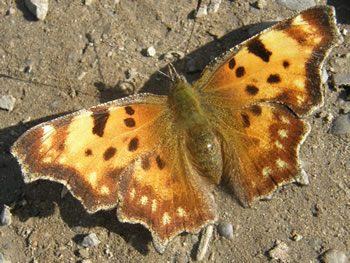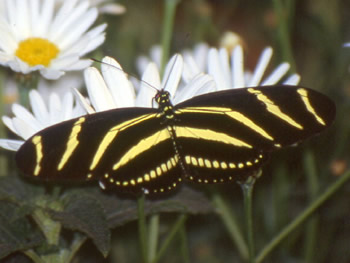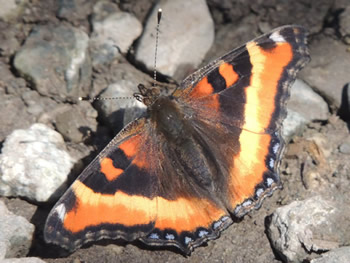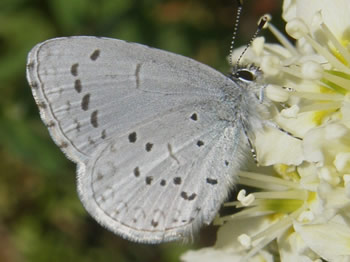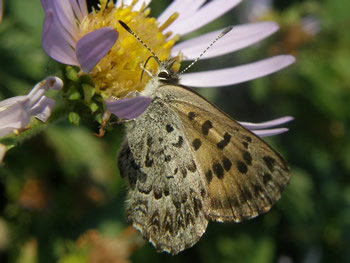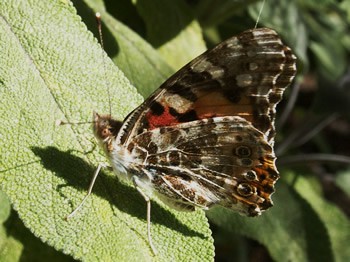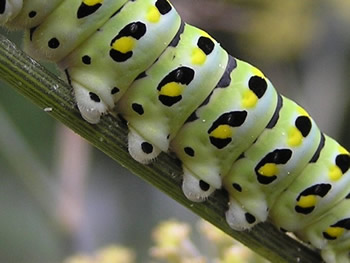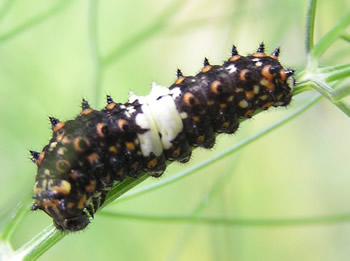|
__ |
|
Butterflies and moths belong to the order of insects called Lepidoptera. Lepidoptera comes from the Ancient Greek words of lepido for scale and ptera for wings. |
|
There are about 725 species of butterflies in the USA and Canada an amazing 20,000 around the world. |
| |
|
|
|
|
|
Butterflies have found in all continents except for Antarctica.
|
|
The life span of adult butterflies is short ranging from a few days to a few months. The Azure Blue lives for about four days and the Mourning Cloak lives for less than a year. |
| |
|
|
|
|
|
When butterflies land they hold their wings close together while moths spread out their wings or curl them around their bodies. |
|
Butterflies have six legs, four wings, two antennae, two compound eyes and a proboscis which is special organ used for sucking and feeding. |
| |
|
|
|
|
|
The scales on butterfly wings are actually tiny, flat hairs which create the dazzling colours and patterns. |
|
Most butterflies have thread-like antennae that are club tipped. |
| |
|
|
|
|
|
Butterflies use their antennae to smell. |
|
Butterflies do not have a mouth but have taste sensors on their feet. They stand on a leaf to test if it would be good food for their caterpillars. |
| | |
|
|
|
|
|
Butterflies can only see the colours red, green, and yellow. |
|
Butterflies can fly up to a speed of 12 miles per hour (19 km/hr).
|
| |
|
|
|
|
|
Butterflies fly like birds do by flapping their wings. Each species of butterfly has its own wing pattern much like a fingerprint. |
|
Butterflies can only fly when their wing muscles are warm, so they bask in the sun with their wings soaking up energy like solar panels. |
| |
|
|
|
|
|
The Monarch Butterfly migrates to Canada and the USA from Mexico a distance of over 2500 miles/4000 km, but few actually make the entire journey as it takes longer than the adult monarch's life span. |
|
Another great migration involves the Painted Lady to England from the desert fringes of North Africa, a distance of 900 miles/1500 km. |
| |
|
|
|
|
|
There are four parts to a butterfly's life cycle: egg, larva, pupa and adult. |
|
Caterpillars are the larvae stage of butterflies. They spend most of their time searching for and consuming plant leaves. |
| |
|
|
|
|
|
Caterpillars have three pairs of true legs and several pairs of prolegs which fleshy structures with gripping hooks called crochets. |
|
As the caterpillar grows it molts several times. The Anise Butterfly caterpillar molts five times changing from the early black and white to a greener caterpillar.
|
| |
|
|
|
|
|
The Monarch Butterfly caterpillars and several other species eat the leaves of toxic plants but are immune to the toxins.
|
|
Caterpillars breathe through small openings down the side of their bodies. These openings are called spiracles. |
| |
|
|
 |
|
 |
Butterflies are divided into families with the largest being the Skippers (Hesperiidae) of which there are over 3500 species. Skippers have antennae clubs that are hooked backwards like a crochet hook.
|
|
14 American states have selected a butterfly as their official insect such as Montana which has selected the Mourning Clock Butterfly, Nymphalis antiopa. Some states have an official insect and butterfly. |
| |
|
|
|
|
|
Monarch Butterflies are toxic to many vertebrate predators. Toxic species usually have bright colours such as red or orange which act as a warning to predators like birds. |
|
The most common butterfly is the Small Cabbage White, Pieris rapae, found in Europe, Asia, North Africa and introduced to North America, Australia and New Zealand.
|


